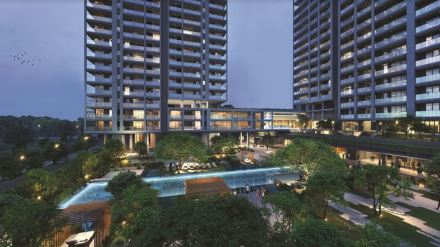In Delhi, the transition from traditional kothis to luxury condominiums is driven by a blend of modern amenities, enhanced community living, and the convenience these developments offer. This shift aligns with the changing lifestyle preferences of the city’s residents, who now prioritize efficiency, security, and access to shared facilities. The allure of condominiums lies in their ability to offer a self-contained living experience, reflecting a significant change in urban real estate preferences.
The transformation of Central West Delhi, particularly in areas like Patel Nagar, into a hub for luxury condominiums is a reflection of the evolving preferences of New Delhi’s affluent residents. The conventional charm of sprawling kothis is gradually giving way to the allure of upscale, modern condominiums.
Delhi’s Real Estate Evolution: The Shift from Kothis to Condominiums
Historically in India, owning a kothi in Delhi has been a mark of luxury and status. These large, independent houses with expansive gardens and spacious interiors symbolized wealth and social standing. However, the Indian psyche is evolving, reflecting the shift towards luxury condominiums. Modern complexes offer a self-sustained ecosystem with amenities that blend luxury and convenience, resonating with contemporary values of efficiency and community living. This trend signifies a departure from traditional status symbols to a preference for modern, practical living spaces.
Also Read: 5 realty hotspots in Gurugram with promising investment potential
Rising Demand for Luxury Condominiums in Patel Nagar
In Patel Nagar, projects like BWD Homes-V and Ess Kay Homes-I exemplify this trend, offering spacious and airy apartments with contemporary designs and amenities. These condominiums are strategically located, providing easy access to urban conveniences while offering a tranquil living environment. Patel Nagar’s transformation into a vibrant and upscale locality is further exemplified by the introduction of high-end commercial developments like upcoming Delhi Mall. This mall is not just a shopping destination but a symbol of the area’s rising affluence, featuring international brands and luxurious amenities. It includes a 9-screen INOX Multiplex, retail shops with a range of international brands, and a diverse food court, catering to the sophisticated tastes of the local community. Such developments reflect the increasing purchasing power of Patel Nagar’s residents and their growing preference for premium lifestyle choices. The presence of these international brands and luxury amenities is a clear indication of the anticipated rise in demand for high-end condominiums, aligning with the residents’ desire for an urban lifestyle that values convenience, community, and luxury.
Infrastructure, connectivity, and modernity Sorted: Patel Nagar Has Urban Vibes
Patel Nagar’s appeal is significantly enhanced by its developed infrastructure and connectivity. The area is well-connected through Main Mathura Road, Goswami Girdhari Lal Marg, and Shankar Road. The Patel Nagar Metro Station on the Blue Line, along with the nearby Shadipur and Kirti Nagar Metro Stations , provides easy access to other parts of Delhi. Major hospitals like BLK Super Specialty and Apollo Spectra are nearby, adding to the locality’s convenience. Furthermore, prominent schools such as DAV Public School and Mars Public School cater to educational needs. For shopping and leisure, residents have access to malls like Moments Mall and City Square Mall within a short distance. These factors contribute to making Patel Nagar an attractive urban dwelling place.
The Future of Delhi’s Real Estate: A Blend of Indian Legacy and Luxury
As Central West Delhi continues to evolve, real estate giants like TARC are taking note of these changing preferences. The focus is on creating living spaces that blend traditional Indian architecture with modern amenities, catering to the sophisticated needs of today’s homeowners.
This shift in Delhi’s real estate market is not just about changing architectural styles; it’s a reflection of the changing lifestyles and aspirations of its residents. The move from kothis to condominiums symbolizes a broader trend towards urban living that values convenience, community, and luxury.
(By Amar Sarin, MD & CEO of TARC. Views are personal)
